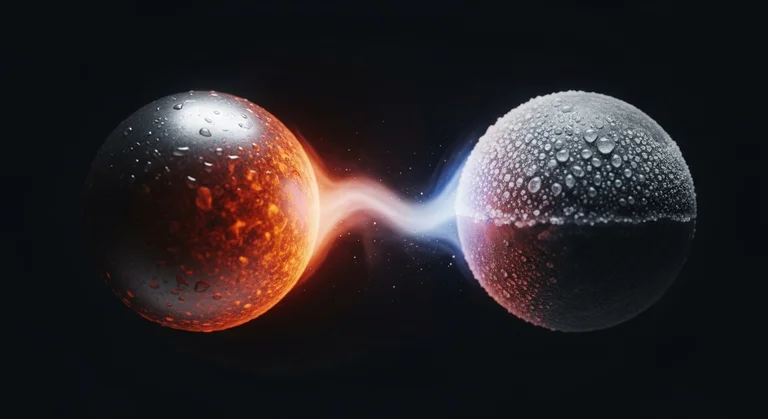- Basic Concepts
What Is Cooling?
Cooling is one of the unseen heroes of modern life and industry.
Cooling Maestro
Co-Founder

Cooling is one of the unseen heroes of modern life and industry. It plays a critical role in everything from keeping our food fresh to making our living environments comfortable, and even enabling advanced technology industrial processes to function. So, what basically is cooling and how does it work? In this article, we will explain the basic concepts and principles behind cooling in simple terms.
What is Cooling?
In its simplest definition, cooling is the process of removing heat from a substance or an environment to lower its temperature below that of its surroundings and to maintain this low temperature. The most important rule of physics to remember is this: Heat always moves from a higher temperature medium to a lower temperature medium. Cooling systems are engineering marvels designed to reverse or control this natural flow of heat. There is no such thing as “producing cold”; there is only “taking heat from one place and moving it to another”.
The Heart of Cooling: The Refrigeration Cycle
The vast majority of modern cooling systems operate on the principle of the vapor-compression mechanical refrigeration cycle. This cycle consists of four main components and is continuously repeated in a loop:
- Evaporator: This is where the cooling takes place. The refrigerant absorbs heat from the environment to be cooled as it evaporates at low pressure. This is just like the cooling sensation when cologne poured on our hand evaporates.
- Compressor: It compresses the low-pressure refrigerant vapor from the evaporator, thereby increasing its pressure and temperature. It is the main component that consumes the energy required for the system to operate.
- Condenser: The high-pressure and high-temperature refrigerant from the compressor releases its heat to the cooler outside environment (usually air or water), condenses, and turns into a liquid. This is the reason for the warm feeling behind refrigerators.
- Expansion Valve: It suddenly reduces the pressure of the high-pressure liquid from the condenser, turning it into a low-temperature and low-pressure liquid-vapor mixture that can easily evaporate in the evaporator.
The continuous cycle between these four components ensures that heat is constantly extracted from the space to be cooled and discharged to the outside environment.
Applications of Cooling
Cooling technology is in every aspect of our lives:
- Food Industry: It is used in every link of the cold chain (cold storage, market aisles, home refrigerators) to keep food fresh from harvest to consumption.
- Air Conditioning (HVAC): It ensures that our living and working spaces are kept at comfortable temperatures.
- Industrial Processes: In many industries such as plastics, chemicals, and metalworking, it prevents machinery and processes from overheating, ensuring the continuity of production.
- Medicine and Pharmaceutical Industry: It is of vital importance for storing medicines, vaccines, and biological materials at specific temperatures.
Cooling is not just an element of comfort, but also an indispensable technology for economic development, food security, and public health.
Let's Design the Perfect Solution for Your Project Together
Let us analyze your needs to design and implement a custom, energy-efficient, and durable refrigeration system for you. Contact us to meet our expert team and get a personalized quote for your project.
Customer Satisfaction
For us, success is more than just a delivered project; it's a long-term, trust-based partnership fortified by our after-sales support.
Field Experience
With over 15 years of industry experience, we craft the most precise and efficient solutions for every detail of your project.
Sustainability
Boost your business's profitability and competitive edge through our focus on Eco-Friendly and Energy-Efficient manufacturing.